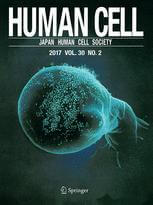 Researchers from the Okinawa Institute of Advanced Sciences published a compelling review article describing several recent clinically relevant projects they have completed using SMRT Sequencing. Released in the journal Human Cell, “Advantages of genome sequencing by long-read sequencer using SMRT technology in medical area” comes from lead author Kazuma Nakano, senior author Takashi Hirano, and collaborators.
Researchers from the Okinawa Institute of Advanced Sciences published a compelling review article describing several recent clinically relevant projects they have completed using SMRT Sequencing. Released in the journal Human Cell, “Advantages of genome sequencing by long-read sequencer using SMRT technology in medical area” comes from lead author Kazuma Nakano, senior author Takashi Hirano, and collaborators.
The team adopted long-read PacBio sequencing as an alternative to short-read sequencers that missed too many important genomic elements. “PacBio RS II confers four major advantages compared to other sequencing technologies: long read lengths, high consensus accuracy, a low degree of bias, and simultaneous capability of epigenetic characterization,” they write. “These advantages surmount the obstacle of sequencing genomic regions such as high/low G+C, tandem repeat, and interspersed repeat regions.”
The scientists present several examples of how this technology has made a difference in their work. Many of these studies were previously unpublished. While we can’t cover them all, here are a few vignettes that caught our attention:
- The team fully sequenced the genome of the Kurono strain of Mycobacterium tuberculosis, yielding a single, circular contig. GC content was as high as 80% across the genome, which also featured “117 sets of >1000 bp identical sequence pairs.”
- They sequenced the genome of a multidrug-resistant isolate of Acinetobacter baumanniicollected in a Nepalese hospital. The assembly, represented in two circular contigs for a chromosome and its plasmid, included several genes conferring drug resistance.
- SMRT Sequencing allowed the scientists to perform de novo assembly and methylation detection for several variants of Leptospira interrogans in a study designed to identify mechanisms underlying virulence in the zoonotic disease leptospirosis.
- A flu study relied on SMRT Sequencing for whole genome analysis of 48 influenza viruses isolated in Okinawa. The study included at least one sample from the H1N1 pandemic in 2009. “Our genomic data set contained temporal and spatial information about the seasonal and pandemic prevalence of flu in Okinawa,” the authors report. “Such insight gleaned will help elucidate the mechanism of acquired resistance to vaccines and drugs and thus inform future drug and vaccine development.”
- The team used long-read sequencing to explore why the incidence of gastric cancer is lower in Okinawa than anywhere else in Japan, despite consistent prevalence of Helicobacter pyloriacross the country. By conducting whole genome sequencing and methylation detection for eight pylori strains, the scientists spotted virulence factor-dependent motifs.
This review demonstrates several of the clinically relevant applications for SMRT Sequencing. PacBio “has significantly impacted basic science and biology and is reaching its influence into the clinical/medical atmosphere,” the scientists write. The technology is “ideal for whole genome sequencing, targeted sequencing, complex population analysis, RNA sequencing, and epigenetics characterization.”